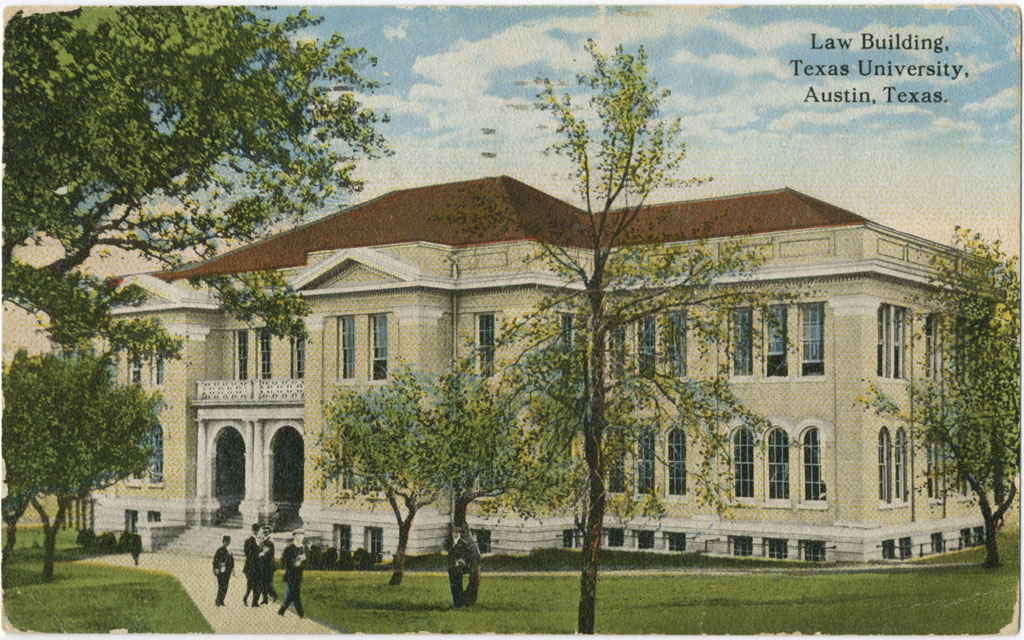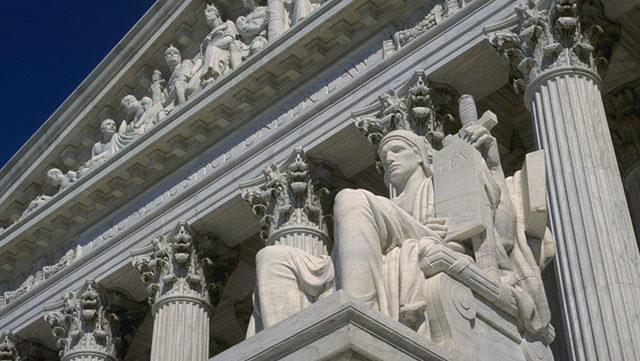Case Status: Loss
Fisher v. University of Texas

CIR’s History Litigating the Issues
The Center for Individual Rights has a long history with the facts at issue in Fisher v. University of Texas. The Fisher litigation grew out of CIR’s earlier case, Hopwood v. Texas, in which CIR succeeded in eliminating the use of racial preferences at the school. In 1996, The Fifth Circuit declared that the University’s use of racial preferences violated the Fourteenth Amendment’s guarantee of equal protection. After this ruling, Texas adopted the statewide “Ten Percent Plan.” Touted as a race-neutral alternative to the explicit use of racial preferences, the Ten Percent Plan gave Texas high-school students who graduated in the top 10% of their class automatic admission to any Texas University. Because many neighborhoods and school-districts are heavily populated by one race or another, the Ten Percent Plan had the effect of ensuring that Texas higher education was racially diverse. And indeed, Texas universities became more diverse under the Ten Percent Plan than under the pre-Hopwood system of racial preferences.
Hopwood remained Constitutional law in the Fifth Circuit until 2003, when CIR’s cases Gratz v. Bollinger and Grutter v. Bollinger were decided by the Supreme Court. Gratz succeeded in ending the system of racial classifications at the University of Michigan’s undergraduate program, but Grutter left the door open for universities to consider race in certain limited ways. In Grutter, Justice O’Connor seemed to apply a weakened version of strict scrutiny by deferring to the University about when and how racial classifications are needed in higher education.
Hopwood remained Constitutional law in the Fifth Circuit until 2003, when CIR’s cases Gratz v. Bollinger and Grutter v. Bollinger were decided by the Supreme Court. Gratz succeeded in ending the system of racial classifications at the University of Michigan’s undergraduate program, but Grutter left the door open for universities to consider race in certain limited ways. In Grutter, Justice O’Connor seemed to apply a weakened version of strict scrutiny by deferring to the University about when and how racial classifications are needed in higher education.
In the aftermath of Grutter, the University of Texas decided to return to its pre-Hopwood practice of considering race in the admissions process. The Ten Percent Plan remained statutory law in Texas, but the University of Texas determined the diversity achieved under that regime was not enough. The University therefore, while continuing to implement the Ten Percent Plan, also gave applicants not admitted under the Ten Percent Plan a “plus “on their admissions score if they were African-American or Hispanic.
In 2008, Abigail Fisher applied for admission to the University of Texas and was rejected. Minority applicants with the same or lower score were admitted because of the racial preferences employed by the university. Fisher sued the university, and CIR filed amicus briefs in support of her case.
CIR Files Briefs in Fisher
When the case first appeared before the Fifth Circuit, the court upheld the use of racial preferences and reasoned that Grutter required courts to give deference to universities instead of applying strict scrutiny. When Fisher appealed to the Supreme Court, CIR filed an amicus brief arguing that courts cannot simply defer to university officials, but instead must continue to apply strict scrutiny to the use of racial preferences.
Justice Kennedy issued an opinion agreeing that courts must apply strict scrutiny even after Grutter. Writing for the majority, Kennedy explained that universities do not receive deference when it comes to the way they administer systems that utilize racial preferences. Whether a program of racial preferences is narrowly tailored is a question for the courts to decide.
Justice Kennedy furthermore hinted that part of a reviewing court’s analysis must include an investigation into whether the same objective could be achieved with a race neutral alternative. Referencing the success of Texas’s Ten Percent Plan, Justice Kennedy suggested that racial preferences may not be constitutional when an alternative is readily available.
In CIR’s view, Justice Kennedy’s opinion had serious flaws. Kennedy affirmed the idea that diversity is a compelling interest of the university and that the principles of academic freedom demand that courts defer to universities on the question of defining true diversity and how much of it is needed to secure the right educational environment. Once this is conceded, however, it is unclear how Justice Kennedy proposes strict scrutiny is to be applied. For if the university is free to determine how much diversity it needs and what kind of diversity it needs, a reviewing court has little to do but defer to the racial preference system the university has put in place. If a court were to strike down a university’s use of racial preferences, the university could start over and claim that more diversity is needed and that a new system is needed to achieve it. The universities and the courts would be locked in an endless cycle of deference, and the university would have the power to push the line.
Unsurprisingly, this is exactly what played out in the Fifth Circuit when the case was remanded. Even though the University of Texas was more diverse than ever without the use of racial preferences, the school said it was necessary for its educational mission to achieve even greater diversity. The Fifth Circuit deferred to the University’s claims and held that there is no upper or lower limit to the levels of diversity a University could claim as necessary to its educational mission. Because there is no limit on the levels the court could inspect, there was no basis to restrain the University from using racial preferences. The Fifth Circuit once again upheld the use of racial preferences on these grounds.
Fisher appealed her case to the Supreme Court once again. CIR filed a second amicus brief arguing that the constitution protects individuals from the state. It does not, as the Fifth Circuit seemed to think, give a state institution the ability trample individual rights under the guise of “academic freedom.” CIR’s brief pointed out that both the Fifth Circuit and Justice Kennedy misunderstood the principles of academic freedom and strict scrutiny. Their opinions gave too much deference to the state in determining what is constitutionally permissible and left the universities with more power over racial preferences than the courts.
However, in an opinion that surprised many Court watchers, Justice Kennedy authored a second opinion that discarded much of his holding from Fisher I. CIR’s warnings went unheeded by the majority opinion who voted to largely defer to the university and uphold the use of racial preferences. The confused application of strict scrutiny found in the opinion is the result of courts trying to permit what they know to be constitutionally impermissible. CIR’s brief acknowledged that this issue may only be resolved when the courts accept their responsibility to apply the constitution.
Updates on this case

Jun 2016
Supreme Court Upholds Unconstitutional Racial Preferences
In what many Supreme Court experts consider a surprise opinion, the Supreme Court voted to uphold the system of racial…

Sep 2015
CIR files Supreme Court brief in University of Texas race preferences case
The legality of racial preferences at the University of Texas is once again before the Supreme Court. CIR has…

Feb 2012
Court to review Texas racial preference plan
The Supreme Court announced today that it granted the petition for certiorari filed by the plantiffs in …
